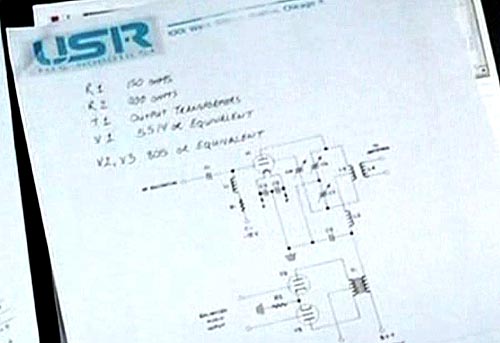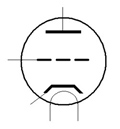There is a progression in the components of electronic computers. In the forties and fifties they were made of vacuum tubes; in the sixties, of transistors; in the seventies and later of increasingly dense silicon chips. And in the future, according to the vision of SciFi master Isaac Asimov, there will be positronic brains, small enough to fit in a robot’s skull, and they will be based on the interplay of positronic potentials in a platinum-iridium matrix. But wait… according to Hollywood, there will be something else.
Enter the 2004 movie “I, Robot”. This has its drawbacks, from the blatant product placement to the inevitable hyperactive hollywoodization of Asimov’s lovely book. Still, the CG robots are neat, and I enjoyed watching it – and something caught my eye about 66 minutes into the film. At that point, the robotic protagonist Sonny sketches its dream for the benefit of Will Smith, and it shuffles some loose notepaper on the lab workbench. The paper has the US Robotics letterhead, and is filled with scientific-looking schematics and stuff. But as one sheet of paper was uncovered for a second, I instinctively recognized a familiar symbol.

 Here is the capture of that frame, and what I glimpsed are the three circles. They’re fuzzy enough, but to a techie of my generation they’re unmistakable: these are the symbols of triode vacuum tubes. In fact, the parts list above the schematic names some of them as “805 or equivalent”; the 805 was a hefty power amplifier triode, as specified here.
Here is the capture of that frame, and what I glimpsed are the three circles. They’re fuzzy enough, but to a techie of my generation they’re unmistakable: these are the symbols of triode vacuum tubes. In fact, the parts list above the schematic names some of them as “805 or equivalent”; the 805 was a hefty power amplifier triode, as specified here.
So – in 2035 they will have positronic brains of incredible miniaturization, and they will also make use of the clunky glass tubes that were in use during World War II. Right.
Whoever prepared the props for this scene must’ve grabbed the schematics and text from some old technical manual… and it can’t even be a matter of product placement, since these tubes are no longer in serious use. Just sloppiness…






This is a schematic of part of an old AM transmitter. The 805 on the top is the final RF power amplifier and the two below are modulator tubes.
Right, Bob. I had a brief fling with building that sort of circuit, before going the whole nine yards and homebrewing a SSB rig…